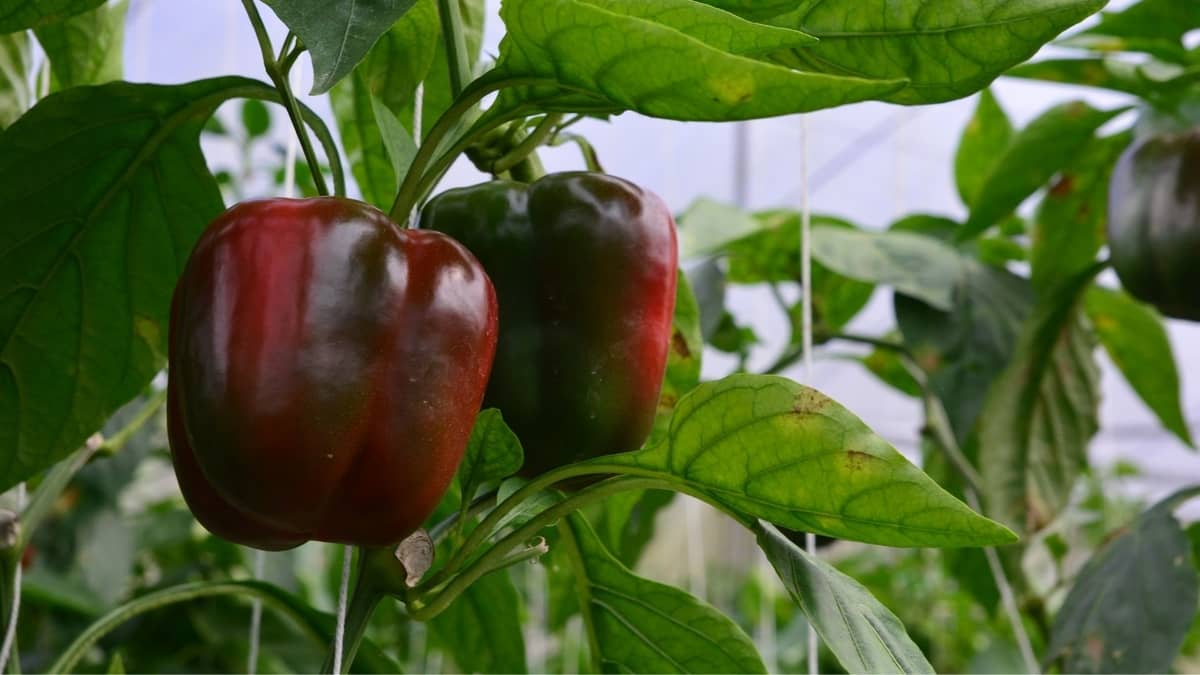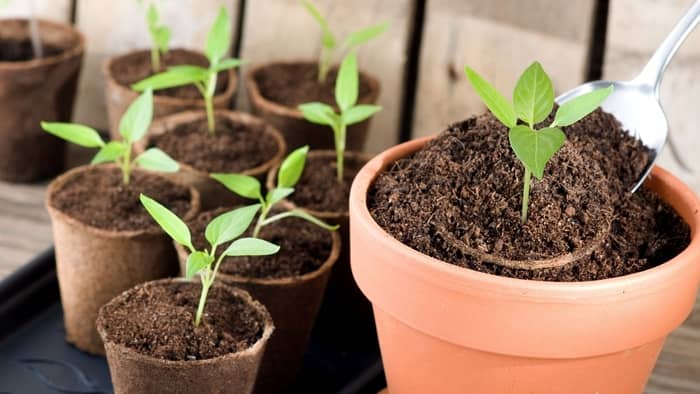Last Updated on April 18, 2022 by Marco C.
Many cooks that don’t have access to a garden wonder how to grow sweet peppers indoors, as there’s nothing better than food made with homegrown ingredients. Luckily, you can definitely grow your own peppers indoors, and they’re not even that hard to grow. In today’s article, we’ll be learning how to grow sweet peppers indoors.
What You Will Need To Grow Sweet Peppers Indoor
Equipment
- containers (pots)
- potting soil
- plastic seed tray
Ingredients
- sweet peppers seeds
- water
- fertilizer
Step by Step Instructions
Step 1: Setting the Location
When you’re choosing a location for your sweet peppers, you have to keep in mind that they need plenty of light and a temperature above 70 degrees Fahrenheit. If you can’t provide the necessary sunlight – your peppers will never grow. In that case, you’ll need to buy LED growing lights, which can effectively substitute sunlight.
It would be best to place the peppers near the window, where they’ll be in direct sunlight.
Step 2: Starting the Seeds
Once you have the actual place to set, you actually start working. To start your seeds, you’ll need to soak them in warm water for about eight hours – preferably in a bowl. This speeds up growth because the water will dissolve the hard coat.
In the meantime, fill a seeding tray with potting soil, both of which you should buy beforehand. Poke a hole in the soil, just scratching the surface.
After letting the seeds stay in water for eight hours, bury them in the soil and leave them above a radiator. Even though they need a temperature of 70 degrees Fahrenheit – they’ll do much better if they’re directly above the heat source.
Lastly, remember to spray down the soil with water whenever it dries out and never let the peppers dry out entirely.
Step 3: Move the Peppers to Pots
After a sweet pepper grows at least four leaves, you can transplant it into a pot – these plants grow leaves in sets of two, so you’ll have two sets of fully grown leaves. Don’t touch the plant when the leaves are still young, wait for them to grow instead.
Not all plants will grow at the same rate, so you’ll probably be transplanting the plants for about two weeks. To transplant, use a clay pot with good drainage – fill it with soil and dig a small hole in the middle of the pot.
The hole itself should be approximately the same size as the patch of dirt in the seeding tray. You can plant more than a single pepper per pot, but make sure not to overcrowd your pots – there should be at least 2 inches of free space between two plants.
Once you move the pepper into the new hole, fill it with potting soil to level and spray it with some water. Remember that transplantations like this are stressful for the plant, so you should leave it be for a few days, just taking care of it.
Learn more about: How Do You Grow Cayenne Pepper Indoors?
Step 4: Care for Your Peppers
We already mentioned the temperature, which shouldn’t drop below 70 degrees. Once your plants are established, you can start watering them plentifully – they should only become dry once a day.
To make sure that you get the maximum out of your peppers – you’ll have to pollinate them on your own (something that you wouldn’t have to do if they grew outdoors). To pollinate, use a q-tip to rub the pollen from a male flower onto a female flower (the very middle of it).
Step 4: Harvest Your Peppers
Once your peppers mature, you’ll be able to harvest them and eat them. There are different varieties regarding color, but traditional peppers are red, and once they reach that color, they’ll be ready for harvest!
Tips and Tricks
Did you know that you can get peppers from a single plant for up to 5 years if you take good care of it? This is rare, but it’s possible if you provide ideal conditions.
Some plants can grow to become very tall – when you’re choosing your variety, make sure that you pick a short plant (since you’re growing indoors and you don’t have plenty of room). You can learn about the plant’s height from the information usually printed on the packaging.
Peppers usually do much better if they’re fertilized with a fertilizer rich in potassium. However, different peppers have different needs, so you’ll need to be advised on how much to use by experts in your gardening shop.
Read more about: The Best Hot Peppers To Grow Indoors
FAQ
Can you grow peppers indoors all year?
Yes, if you keep the conditions ideal, your peppers will be more than able to grow all year. In theory, you could get peppers from a single pepper plant for up to five years if you take good care of it - this is very difficult to achieve, though.
Can I grow sweet peppers from the seeds inside?
Yes! Even though some plants are much easier to grow as an already established plants, peppers are so easy to grow that it's best to grow them from the seed. You'll start the seed in water before planting it, and it won't take long for it to turn into an established plant.
How many hours of light do pepper plants need indoors?
A minimum is 6, but the more the better. Peppers are very dependent on light, and if you could provide them with 12 hours of light a day, you'll see much better results. If you don't get plenty of natural light, think about using artificial growing lights for your indoor pepper garden.
To Sum Up
Peppers are some of the easiest plants to grow, and you can definitely grow them inside. Make sure to provide enough light, humidity, and especially water. Fertilizing your peppers on time will also help improve the yield, and the same can be said for pollinating.
Peppers can actually be grown throughout the entire year if you can simulate an ideal environment, and growing them indoors isn’t a handicap at all.


